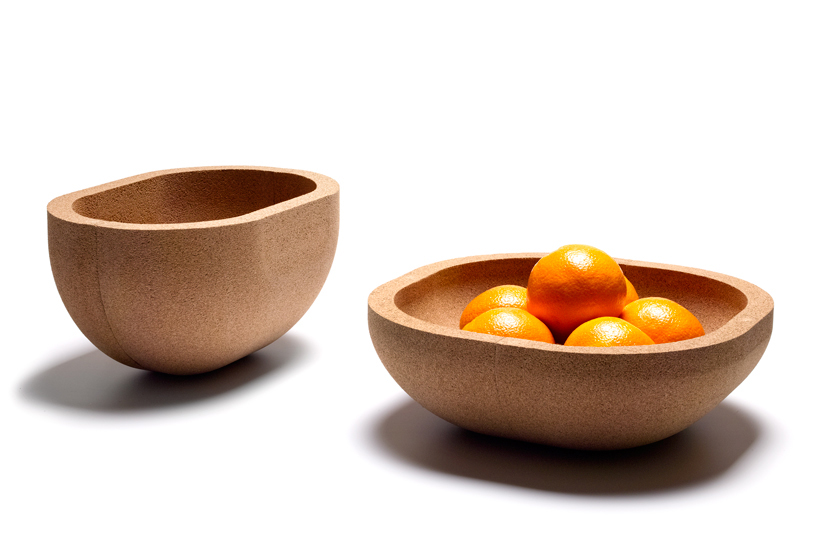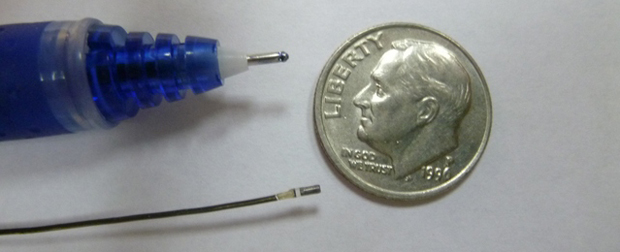Small wonder: The compact Amigo TravelMate III
by: The Design blog, 2011-05-03 21:56:05 UTC
Roopasuresh:

It is strong, lightweight and packs quite a punch. The Amigo TravelMate III is the latest in the range of power operated vehicles (POVs) from Amigo Mobility International Inc.
The company is the pioneer in building mobility vehicles. It first established the concept by inventing the mobile carts for use in large supermarkets. TravelMate III is the upgraded and more advanced version of its namesake.
TravelMate III is primarily for traveling long distances by those who are in need of assistance while walking. It is capable of a 31 inch turning radius and has a self contained hub motor. The twist grip throttle allows for one handed handling. It has a variety of features like an aluminum platform, five position seats, reversing options, collapsible seat and a lithium-ion battery.

The most unique feature of this pocket dynamo is its weight of mere 53 pounds. Yet, its light weight frame is capable of supporting a human body of nearly 250 pounds. Moreover, its unique collapsible feature enables it to be rolled up inside the boot of a car and is ready for use whenever required.

The TravelMate III has been launched in three eye-catching colors - cinnamon red, pacific blue and lime green. It has got widespread application for those with chronic leg problems like arthritis. It enables them to be active and comfortable when they move around and is a boon for those who are unable to walk long distances.


 Coulvue: An iPad 2 stand for travelers
Coulvue: An iPad 2 stand for travelers
by: The Design blog, 2011-05-04 14:06:27 UTC
Jaazhh:

So, you are a proud iPad 2 owner and love flaunting it always. A lot of stands have been made on to which this sleek gadget can rest but when it comes to using your iPad in a car you either place it on your lap or hold it in your hands. This can get a bit tiring if the ride is long. Keeping its usage while traveling in mind, Coulvue for iPad 2 from TouCoul has been designed for a richer experience.
CoulVue will act like a stand for your iPad which can be fixed behind any headrest of a car. In other words it is compatible with headrests of almost any car. This 0.88 lbs stand will allow backseat passengers to watch their favorite movies, listen to the music of their choice, play games and surf the net easily. The arm of this device is supple and can be pulled out as per your whims and fancies for a much better viewing experience.
While traveling with your family and friends simply switch it on the share mode and the screen will move towards the center and position it between the two headrests, so that everyone can enjoy and watch together. CoulVue has been wedged with a function which will allow the passenger to tilt/twist. One can easily spin the iPad in a portrait or landscape mode plus rest it in a specific angle for better viewing.
The biggest threat while traveling is dropping any gadget if the ride gets a little bumpy but CoulVue has been fashioned in a manner which will provide maximum strength and protection to your iPad. It will tightly hold the iPad in place and never let it fall. One can easily place the iPad and take it out from the stand and because of the presence of soft coated inner lining the fear of bruising your most loved gadget will take a backseat.
So, if iPad2 is your best companion while traveling then CoulVue will definitely leave you impressed with its functional nature. Simply install it in your car and never feel bored or tired.
Via: toucoul


 nendo: par + parte for materia
nendo: par + parte for materia
by: Designboom - Weblog, 2011-05-04 09:22:00 UTC

bridging the gap between cork and user, the natural material is applied to objects for every day use.
read more
mike bouchet: shopping cart lounger
by: Designboom - Weblog, 2011-05-04 10:39:00 UTC

reappropriating the shopping cart for everyday comfort and relaxation.
read more
World's Smallest Medical Camera Is Disposable, Too
by: fast company, 2011-05-04 22:04:22 UTC
An Israeli firm has unveiled a tiny medical camera that is less than a millimeter wide. More importantly, the camera is disposable--which could help lower the cost of surgeries and diagnostic procedures.

The world's smallest medical camera was unveiled this week by Israel-based biotechnology firm Medigus. The camera is .99 millimeters wide and boasts a resolution of 45,000 pixels--not high resolution by any means, but a shocking degree of clarity from a camera of that size. Because the camera is disposable, it will significantly cuts down on prep time for surgeries and endoscopic procedures thanks to being pre-sterilized. Even more importantly, the camera will significantly lower the cost of endoscopic diagnostic procedures. Reusable medical cameras require highly specialized, expensive sterilization procedures whose cost is often figured into patients' and insurance providers' bills.
Medigus's product is designed for use in both endoscopic diagnoses and surgery. According to a statement by Medigus, the camera is designed for use in cardiology, orthopedics, gastroenterology, gynecology, otolaryngology, robotic surgery, and bronchoscopy. While the camera is not on the market yet, Medigus will be both integrating them into their own endoscopic products and licensing the technology out to third-party manufacturers. Medigus will also be sending sample cameras to American and Japanese tech firms specializing in cardiology over the next few weeks.
The cameras work through a dedicated .66 millimeter CMOS sensor based on sensor design and production technology from TowerJazz. Just last week, another miniature camera called the NanEye was released by Portuguese firm Awaiba that is 1 millimeter wide, but the Medigus product is smaller and offers significantly better resolution.
Medigus Vice President of Sales & Marketing Yaron Silberman told Fast Company by email that “the camera has a better image quality than fiber optics, which are the current standard for visualization in narrow lumens. Thus, it will enable performing current procedures with greater confidence and safety and potentially enable additional new procedures.” According to Silberman, each individual camera price is expected to vary between the thousands and tens of thousands depending on the exact specifications, requirements, and order quantities.
To be sure, that's pretty spendy for a product that's considered "disposable," but cutting-edge tech doesn't always come cheap. Reusable cameras of similar size cost several times as much, but the attendant maintenance and repair costs (it isn't cheap to take care of a stomach-invasive camera, after all) can make the overall expense sky-high.
The miniature camera was developed jointly by Medigus and TowerJazz with assistance from the Israeli government's Ministry of Industry, Trade and Labor. Disposable medical cameras are big business; approximately 4 million cameras were sold to hospitals and health care providers in 2010 at a total cost of almost $500 million.
While the cameras are expensive, the reduction in surgery/procedure preparation time and expense they offer is significant. The interesting thing for medical technology buffs to follow is what kind of third-party products are built using the camera--and what happens when medical cameras miniaturize to ever smaller sizes.
[Image courtesy Medigus]
For more stories like this, follow @fastcompany on Twitter. Email Neal Ungerleider, the author of this article, here.


 Analysis: Americans go from rage to resignation over $4 gasoline
Analysis: Americans go from rage to resignation over $4 gasoline
by: Reuters: Green Business News, 2011-05-04 17:43:42 UTC
NEW YORK (Reuters) - When gasoline prices shot to $4 a gallon in 2008, sticker shock cut fuel demand and helped send world oil prices tumbling by more than $100 a barrel in just five months.
 Cotton candy-like material used to heal difficult wounds
Cotton candy-like material used to heal difficult wounds
by: Gizmag Emerging Technology Magazine, 2011-05-04 20:50:19 UTC

Many diabetics suffer from a condition known as venous stasis, which can result in wounds on their extremities that remain unhealed for up to several years – if infection sets in, amputation of the limb is sometimes even necessary. Such wounds can sometimes be treated with vacuum-assisted systems, but the equipment required is expensive, and must be carried by the patient at all times. In clinical trials conducted last year, however, human venous stasis wounds were quickly and thoroughly healed with an inexpensive new glass nanofiber material, that looks like cotton candy...
Continue Reading
Cotton candy-like material used to heal difficult woundsTags: Diabetic,
Healing,
Injuries,
Nanotechnology,
Wound
Related Articles:


 Bento: A Solar Powered Way to Compartmentalize Your Smart Devices Like a Japanese Lunchbox
Bento: A Solar Powered Way to Compartmentalize Your Smart Devices Like a Japanese Lunchbox
by: Inhabitat , 2011-05-04 15:39:55 UTC

As our number of personal smart devices grows, it seems we’ve begun to carry around a personal home office everywhere we go – laptop, cell phone, iPod - all jangling around in our bags. Hoping to streamline this mish mash of electronics, designer René Lee has designed a product which just won the Fujitsu Design Award – the solar-powered Bento system. Just like the Japanese lunchbox by the same name, the Bento unifies and compartmentalizes all of your gadgets from your laptop to your tablet and smartphone.






Read the rest of Bento: A Solar Powered Way to Compartmentalize Your Smart Devices Like a Japanese Lunchbox
Permalink |
Add to
del.icio.us |
digg
Post tags: Bento, eco design, Fujitsu Design Award, green design, green technology, lithium ion battery, oled screen, Rene Lee, smart devices, sustainable design
Intel Announces Revolutionary 3D Transistors That Cut Energy Use by 50%
by: Inhabitat , 2011-05-04 21:38:45 UTC

Today Intel announced plans to produce and distribute the world’s first 3-D transistor – a revolutionary breakthrough in computer hardware that heralds a new generation of more powerful computer chips that consume less energy. Dubbed the “Tri-Gate” transistor, the device is 37% more energy-efficient than current 2D transistors at low voltages and consumes less than half the energy of 2D transistors while running at the same performance level. Transistors form the building blocks of modern electronics, so the breakthrough has far-reaching implications for devices ranging from mobile phones to computers, medical equipment, and vehicles.



Read the rest of Intel Announces Revolutionary 3D Transistors That Cut Energy Use by 50%
Permalink |
Add to
del.icio.us |
digg
Post tags: 3d transistor, computer chip, energy efficient electronics, energy-efficent computers, green design, green technology, intel, ivy bridge, moore's law, sustainable design, sustainable technology, tri-gate transistor
Bread Spoons are Biodegradable (and Delicious) Utensils You Can Eat
by: Inhabitat , 2011-05-03 17:15:20 UTC

Now here’s an idea we can really sink our teeth into. Designer Siren Elise Wilhelmsen seeks to revolutionize the concept of the spoon, (which, let’s face it, hasn’t seen much improvement in the past hundred years or so), with her incredible edible bread spoons. Not only is the idea smart, funny, and kind of cute, it also looks like it tastes really good, especially with a bowl of soup. Not to mention the fact that these biodegradable utensils leave a lot less waste than their plastic counterparts, which is none at all if the user is hungry enough.
Read the rest of Bread Spoons are Biodegradable (and Delicious) Utensils You Can Eat
Permalink |
Add to
del.icio.us |
digg
Post tags: bread spoon, bread spoon and soup, bread spoon for soup, eco design, environmental design, environmental sustainability, green design, Sire Elise Wilhelmsen, spoon bread

Comments by our Users
Be the first to write a comment for this item.